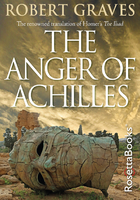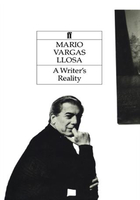Marvin Gaye and his father were at each other's throats again.
Gaye was staying at the Tudor-style home he bought for his parents in the Hancock Park section of Los Angeles, a block from the buzzing traffic of the Santa Monica Freeway. He had retreated there to recuperate after a tour that was supposed to capitalize on his hit song "Sexual Healing." But the tour fell apart prematurely, done in by Gaye's narcotics abuse, paranoia and indifference.
He wasn't getting better at his parents' home, which had become his drug-hazed womb. He cocooned in his bedroom, cradling a machine gun, leering at porn videotapes, freebasing cocaine and angel dust, and wallowing in the pity of his loving but enabling mother, Alberta.
Down the hall, Gaye's father, Marvin Sr., was in his own version of an isolation tank, numbed with vodka.
The two Marvins had spent their lives parrying over some unresolved and perhaps irresolvable conflict, probably because they were so much alike. Maybe it went back to Oedipus. Maybe it was mutual self-loathing. Marvin Sr., a preacher in a fringe faith, claimed to detest immorality and vice, yet could not resist booze and a kinky urge to wear dresses. Marvin Jr., a musical genius who ascended from Motown sideman to one of its most valuable stars, had a public image as a tender man, with his odes to romance. Yet he was a misogynist who abused and degraded every woman he professed to love.
Their ultimate argument was rooted in machismo, as usual. It happened on the morning of April 1, 1984, the day before Marvin Jr.'s 45th birthday.
Marvin Sr. had hollered at his wife, and Marvin Jr. took umbrage. The father crossed the threshold of Marvin's bedroom, and the son shoved the 70-year-old man back into the hallway. Marvin knocked him down and kicked him, then retreated to his room. A minute later, Marvin Sr. was back at his son's door, pointing a Smith & Wesson revolver at his famous namesake. He squeezed the trigger once, then twice, and Marvin Gaye was gone.
How could violence have claimed the artist who asked pointed questions about modern America's failings in his visionary album, "What's Going On?"
It's simple. That is the contradiction of rock. And the singer's life and death is a marquee example of all that is good and all that is bad about stardom. Yes, his father killed him (and got probation for what was judged a defensive homicide). But he was a victim of his fame, as well. He lived and died in the crucible of a business where the obituaries of its stars are often written in blood.
Sam Cooke. Felix Pappalardi. Sax king King Curtis. Doo-wop legend James ("Daddy's Home") Sheppard. John Lennon. "Sir" Walter Scott. Del ("Runaway") Shannon. Richard Manuel of The Band. Kurt Cobain. Tupac Shakur. Selena, the Tejano queen. "Dimebag" Darrell Abbott. Janice Joplin, Dennis Wilson, Jimi Hendrix, Keith Moon, Jim Morrison, Gram Parsons, Sid Vicious, Elvis Presley, Michael Jackson.
Each of those musicians "had the shit," in the parlance of the business, and all have gone to early graves. Some of the deaths were violently self-inflicted, by rope, rifle or shotgun (Manuel, Shannon, and Cobain). The last nine names reached an early eternity with the aid of drugs.
Cooke, the soul crooner, was killed during a tawdry tryst at a hot-sheets motel. Pappalardi, a drug-addled musical genius who was a producer for Cream, was caught with his pants down and faced the wrong end of his wife's Derringer. King Curtis took a knife in New York City. Sheppard bought it in his car on the shoulder of the Long Island Expressway. Scott, who presaged his own demise when he sang "(Look Out for) The Cheater," was done in by his wife and her lover. Shakur was a victim of the band-on-band violence afflicting hip-hop.
And there were Lennon, Selena, and Dimebag Darrell, each murdered by a supposed fan. It turns out that if the drugs, lifestyle, and stress of the music racket don't kill you, one of your fans might.
In the summer of 2011, the English soul revivalist Amy Winehouse became the latest rock star to make an early exit when she was found dead in her London apartment. She assumed a place in a woeful pantheon of rockers who died at age 27. The list includes Joplin, Cobain, Hendrix, Morrison and Brian Jones of the Rolling Stones, along with many lesser-knowns.
Winehouse, born in 1983, grew up in the middle-class north London suburb of Southgate, the second child of taxi driver Mitchell Winehouse and his wife, Janice, a pharmacist. She displayed a prodigious musical talent as an adolescent, and her parents steered her into performing-arts schools.
But she had a rebellious streak, like so many burgeoning rockers, and she chose songwriting over schooling. She was signed to a management contract in 2002, at age 19, and she spent several productive years writing most of the two dozen tunes in her truncated but remarkable songbook.
She developed a personal fa?ade borrowed from the beehive-and-heels look of 1960s girl groups like the Shirelles ("Dedicated to the One I Love," "Baby, It's You," "Will You Love Me Tomorrow?"), though she gave the clean-cut guise a twist with Goth mascara, daisy dukes or skimpy summer shifts, and a collection of a dozen tattoos, from pin-up girls to lightning bolts.
Winehouse first earned notice in Europe in 2003 with the release of her debut recording, "Frank," hailed by critics as original and honest. Half of the tracks had the feel of a smoky 1950s jazz piano bar, and Winehouse's vocals and syncopated phrasing sounded like a contralto Billie Holiday. The candor of her lyrics also stood out—for example, in "Fuck Me Pumps," a biting commentary on gold-digger women seeking wealthy trophy husbands.
Worldwide acclaim arrived in 2006 with her second recording, "Back to Black," and its first hit single, "Rehab," a story-song about the attempts of her handlers to pack her away for treatment of her narcotics addiction. The song is delightfully catchy, with its refrain of "No, no, no!" But at the same time, its unspoken subtext of the inevitable trouble ahead was cringe-inducing.
Of course, many rock bands have flogged their counterculture bona fides by recording admiring songs about drugs, from Hendrix's "Purple Haze" to "White Rabbit" by Jefferson Airplane to "Lucy in the Sky With Diamonds" by the Beatles.
But the lyrics to most of these songs make the subject matter oblique. Winehouse's "Rehab" was bluntly autobiographical, and the words made it clear to everyone but herself that she was hell-bent on self-destruction.
By the time she won her fame in 2006, Winehouse's creative life was all but finished. Her songwriting had dried up, and her life was reduced to a sad public spectacle as she teetered about London in a drug haze. Pressed by her record company, she resorted to recording a series of song covers for an LP whose release was postponed repeatedly.
Like many creative souls, Amy Winehouse proved to be an eager participant in the vices. But she also had an enabler: her boyfriend, Blake Fielder-Civil, whom she married in 2007. He crowed to the press that he had introduced Winehouse to heroin and crack. In 2009, in the midst of one of her many failed attempts to go straight, Winehouse admitted that she and Fielder-Civil had a mutually destructive relationship.
"The whole marriage," she said, "was based on doing drugs."
The end of her life was an appalling public unraveling. She had isolated herself from her parents—refusing to return their phone calls. They turned to the media in an attempt to communicate with her indirectly, standing humbly before cameras and microphones to encourage their daughter to take another stab at rehab. Her father-in-law chimed in that the fans could help by boycotting her music until she sobered up.
Sadly, Winehouse followed a behavioral spiral that has become a well-worn rut for rock stars. Public adulation is followed closely by a loss of self-control and a lack of personal accountability. In the end, no one could save her from herself—not her parents, not her handlers, and certainly not her fans.
Facing a modest, 12-date European tour in June 2011, she agreed to try to clean up once again at a Priory drug rehab clinic. She went in on May 25 but split after a week. Her tour kicked off in Belgrade, Serbia, on June 18, but Winehouse was in no condition to perform. Her handlers essentially pushed her onstage as she protested, and the show was a predictable fiasco. She stumbled about, mumbled and mangled song lyrics, couldn't remember the names of her sidemen during introductions, and finally took a seat atop a monitor speaker—the deeply troubled queen of neo-soul on an appropriate throne.
The remaining tour dates were scotched, and the singer retreated to her apartment in the Camden section of London. It was there a month later, at about 4 o'clock in the afternoon on July 23, that medical rescuers found her dead in bed. There were no obvious injuries to her body, and a tsk-tsking Greek chorus was expecting toxicology results to confirm suspicions that the cause of death was an overdose.
Amy Winehouse had a nice career. Unfortunately, she missed out on most of it—in drugged oblivion while she was alive, and then behind the dark final curtain of death. She wrote her own epitaph in the lyrics to "You Know I'm No Good":
"I cheated myself,
Like I knew I would.
I told you I was trouble,
You know that I'm no good."
A few years ago, a public health professor in Liverpool, England, conducted a study that concluded that pop music artists in North America and the United Kingdom are twice as likely to die young than the average citizen. The average age for musicians who died young was 42 in North America and 35 in the U.K. The figures were based on database searches for obituaries of 1,000 musicians who had hit records, dating to the 1950s.
"American Idol" contestants should take note.
The study has its doubters, including Dave Marsh, who has spent 40 years writing about rock 'n' roll. "Anecdotes are not evidence," he told me.
Anecdotes may be all we have to go on.
As Susan Raeburn, a California clinical psychologist who has researched the psyche of rock musicians, put it, "The National Institutes of Health are not going to pay for a study on the mortality of rock stars. They don't give a shit about the death rate of musicians." And why should we? Because these are our idols, at least nominally, until something better comes along.
The Beatle George Harrison, who had a front-row view of idolatry, said that he came to view fame as a ball and chain. The Beatles were "hounded day and night, regardless of where we were or what country we were in," Harrison said. "Fame is a soul-eater," said Jerry Garcia of the Grateful Dead. Lady Gaga calls her life of pop stardom "a show without an intermission."
Harrison was once asked about the "emotional trade-off" between stars and fans. The subtext was the murder of John Lennon in New York City in 1980.
"They gave their money and they gave their screams," Harrison said, "but the Beatles kind of gave their nervous systems, which is, you know, a much more difficult thing to give." In 1999, a few years after he made his comment, a deranged man broke into Harrison's home in England and drove a butcher knife into his chest. He survived, only to die of cancer two years later.
One day in the 1980s, Mark Knopfler of Dire Straits was shopping in a New York City appliance store when he overhead a soliloquy by a hard-hat type who was watching a rock video. Knopfler borrowed a pen and scribbled down the guy's words. It became the hit song
"Money for Nothing": "Now look at them yo-yos, that's the way you do it. You play the guitar on the MTV. That ain't workin', that's the way you do it. Money for nothing and your chicks for free. Let me tell you, them guys ain't dumb. Maybe get a blister on your little finger. Maybe get a blister on your thumb… The little faggot with the earring and the makeup… that little faggot got his own jet airplane. That little faggot, he's a millionaire."
It might look easy on MTV, but is the rock 'n' roll lifestyle so grand?
Rock writer Marsh doesn't think so. Touring musicians have a tough life, except for elite superstars like Bruce Springsteen and the Rolling Stones, who can afford a chartered jet. Most musicians travel by bus, leaving one city after a show and arriving the next day in a new town, at a new venue.
"It's more like being a long-haul trucker than anything else," Marsh told me. "Why do musicians become drug- and alcohol-addicted? It's all about working conditions… You get no sleep, you're not eating well. You're basically eating stress for breakfast, lunch and fucking dinner. That's why people start taking drugs… The drugs come in so you can survive the working conditions."
Gonzo journalist Hunter S. Thompson is rumored to have said, "The music business is a cruel and shallow money-trench, a long plastic hallway where thieves and pimps run free, and good men die like dogs. There's also a negative side." If only it were true. Actually, Thompson wrote the comment about the TV news business, not music. A creative writer repurposed the quote and added the clever kicker. Of course, even the most starry-eyed of fans must understand that rock 'n' roll has an unattractive underside.
"A lot of that goes with the bullshit of rock 'n' roll," the veteran rock drummer Corky Laing told me, "and believe me when I tell you there's a lot of bullshit in rock 'n' roll."
Roger Catlin, another longtime rock critic and observer of musicians, told me that "the road" becomes a rock musician's nemesis.
"Rock 'n' roll is a tough life, and I think that's tied to the transportation," said Catlin, who has covered music for newspapers in the Midwest and Northeast. "Dope is a way to deal with the boredom of all the travel."
"I've had 42 years of doing this job," added Marsh, "and I am 100 percent convinced that—beyond the propensity for psychological issues that creative people and extremely manic people have—the pressure of the working conditions drive the addictions."
The problem is compounded because musicians famously have what Raeburn, the California psychologist, calls "difficulties with self-regulation."
Catlin put it this way: "Creative types are presumed more sensitive than others and don't have coping mechanisms for daily woes other than drink and dope, which are so available on the road."
I asked George Kilby Jr., a New York-based musician who toured with Pinetop Perkins and now fronts his own band, The Road Dogs, about the road. He said that for him, it's not so much the temptations as it is the indignities that musicians must suffer, often having to do with venues run by "a 24-year-old kid with a clipboard who wants to tell you the hows and whys of the bar business."
In 1967, a Memphis combo called The Hombres had a hit with a two-minute ditty with a title straight from a head-shop poster: "Let It All Hang Out." The song captured rock's spirit: Hold nothing back. The final verse was an ode to the road: "Sleep all day, drive all night. Brain may numb, can't stop now. For sure ain't no doubt. Keep an open mind. Let it all hang out."
But drummer Laing said there is a "dark side of freedom."
"The real substantial performers, the ones who really have the shit, they know the benefit of living with a lack of control," he said. "They want to be completely free… The idea is to break every rule and see what comes out of it."
He has spent 50 years in rock, first with Mountain, the trio that had a hit with "Mississippi Queen," and recently with the Memory Thieves.
He told me, "Look, the whole life you lead is out of whack. If you grow up in a normal family, you know that there are certain things you're supposed to do—sleep, work, eat, go to school. You grow up doing certain things at certain times. But the music business is different. You do nothing on a schedule. You have no structure… And then you run up against what I call the anti-time, where you are not feeling creatively inspired. So what do you do? You will create something to fill the gaps. Maybe it's substance abuse, maybe it's some other self-destructive behavior. Maybe it involves a gun or a knife… That's the dark side of freedom. You're not accountable to anybody or anything."
How do some musicians manage to stay healthy and grounded?
"People who gain a level of celebrity often have the misfortune of being surrounded by sycophants who stop giving them normal feedback about the consequences of their bad behavior," said Raeburn, the psychologist. "But there are artists who have family members and a real life, maybe a wife who will say, 'Uh, honey, don't be late picking up the kids after school.' It grounds them and saves them from falling down the rabbit hole of excess. It helps remind them of the normal, appropriate consequences of bad behavior … because many of them live in a culture where they are almost expected to act a certain way. Some of them have to relearn how to have some human humility."
That's not always easy for someone with an artistic sentiment.
"Musicians are artists, and artists are vulnerable and fragile," said Laing. "You're sensitive to everything. And your inventory, as an artist, is in your heart. It's not like something hanging on the wall, like a shirt or a pairs of shoes for sale. But you still have to protect your inventory. You have to protect your heart and your mind. Be honest: A lot of brilliant people are semi-insane, and there are a lot of brilliant people in rock 'n' roll."
One of them is Jim Gordon. Turn on an oldies radio station and you'll hear his work, even if you don't recognize his name. Gordon was a Los Angeles-based rock drummer in the 1960s and '70s. He was a human metronome, with a flawlessly steady beat. And he played tastefully, with the perfect stroke, whether he was backing a lilting Beach Boys ballad or a muscular Eric Clapton rocker.
Plucked by a talent scout from a San Fernando Valley teen band, he was touring England with the Everly Brothers a week after high school. He became a protégée of Hal Blaine, the legendary L.A. studio percussionist, and one of the most sought-after session drummers in the city's exploding recording scene. From 1966 to 1980, he played on more than 300 LPs, an average of 25 a year.
His hit singles as a sideman include a mind-blowing variety: Among many others, "Classical Gas" by Mason Williams; "God Only Knows" by the Beach Boys; "Different Drum" by Linda Ronstadt's Stone Poneys; "Grazing in the Grass" by the Friends of Distinction; "Sundown" by Gordon Lightfoot; "Baby I'm-a Want You" by Bread; "Marrakesh Express" by Crosby, Stills & Nash; "Annie's Song" and "Thank God I'm a Country Boy" by John Denver; "Gentle on My Mind" and "By the Time I Get to Phoenix" by Glen Campbell; "Rock and Roll Heaven" by the Righteous Brothers; "Rikki Don't Lose That Number" by Steely Dan; "Midnight at the Oasis" by Maria Muldaur; "You're So Vain" by Carly Simon, and "The Low Spark of High-Heeled Boys" by Traffic.
He recorded with three of the four Beatles (Paul missed out), including "My Sweet Lord" with George Harrison. He played drums on Eric Clapton's hit recording of "After Midnight" and was a member of Clapton's Derek and the Dominoes. Gordon got a writing credit (and residuals) for "Layla," penning and playing the plaintive piano solo. In 1973 Gordon recorded a long solo on "Apache" by the Incredible Bongo Band that became one of the most sampled beats in rap music. Even today, it is called "the national anthem of hip-hop."
He was at the top of the rock 'n' roll heap in the early '70s. Everyone wanted him. Tall and handsome with curly blond locks, Gordon looked more like a California surfer dude than even Jan and Dean. (He was so sun-kissed and wholesome that Frank Zappa nicknamed him "Skippy.") He bought a home in Hollywood and bopped from one session to the next in a new Mercedes. He dated a string of lovely young singers, including up-and-comer Rita Coolidge.
"No question he was a big talent, a real artist," fellow drummer Corky Laing told me. "And everyone thought he was the sweetest guy in the world."
But Gordon began to exhibit troubling, violent behavior, beginning as early as 1969. He punched Coolidge during a tour stop in New York with Delaney and Bonnie. A few years later, he choked singer Renee Armand, prompting an abrupt end to their six-month marriage.
As he turned 30 in 1975, Gordon grew increasingly erratic. At a Johnny Rivers recording session, he accused other musicians of using mind-control on his hands to prevent him from playing well. Some blamed his paranoid hallucinations on narcotics. Like just about everyone else in the business then, Gordon abused the junk, but he was beyond far out. He told friends that he heard voices in his head—often that of his mother, Osa Marie Gordon. The voices told Gordon what to do, and he followed instructions.
Gossip about Gordon made its way around L.A.'s rock scene, and his work began to dry up. By 1978, when he took a final tour (with Jackson Browne), Gordon was under the care of psychiatrists. Diagnosed as a paranoid schizophrenic, he spent a dozen stretches in mental hospitals, beginning in 1977.
By 1981, Osa Gordon was afraid of her son. He irrationally blamed her for many things, including the death of Karen Carpenter, the emaciated soft-rocker. The retired nurse began keeping notes about her son's threats. Their contacts grew sporadic as his schizophrenia deepened. In the spring of 1983, after a two-year lull, Gordon called his mother to demand that she cease transmission of mind messages. Mortified, she decided to move to Oregon. It was too late.
At nearly midnight on Friday, June 3, 1983, Jim Gordon knocked at his mother's apartment in North Hollywood. When she opened the door, he cracked her skull with a hammer, then plunged a knife deep into her chest and left her to die. He was arrested and charged with murder.
Five different psychiatrists declared him insane to one degree or another. But the tide had turned against insanity defenses in 1982, after John Hinckley was declared not responsible for shooting President Reagan. California and other states rewrote the criminal code to put the onus of proof on disturbed criminals.
As a result, Gordon was convicted of second-degree murder and sent to prison, and he was still there in 2011, at the Men's Colony at San Luis Obispo, a minimum- and medium-security facility with a mental health program. At age 65, he had been locked up for more than a quarter-century.
In 1985, not long after his conviction, Gordon sat down for an interview with Barry Rehfeld of Rolling Stone. He agreed with the jury's estimation that prison, not an institution, was his appropriate place.
"I really don't feel that crazy," he said. "I think I'm pretty normal."
He seemed anything but normal when asked about killing his mother.
"I had no interest in killing her," he told Rehfeld. "I wanted to stay away from her. I had no choice. It was so matter-of-fact, like I was being guided like a zombie. She wanted me to kill her, and good riddance to her."
Dave Marsh, the rock journalist and author, called the Gordon murder "flukey." "There was only Jim Gordon, and there won't be another," he said.
But rock 'n' roll was a factor in his violence.
Dr. William Vicary, one of the psychiatrists who examined Gordon, told Rehfeld that Gordon "was strongly predisposed to becoming a schizophrenic." Without that illness, he said, the murder likely wouldn't have happened. He added, "The stress of working in a highly pressured, idiosyncratic business like music was a contributing factor, and the drugs and the alcohol, used as self-medication, didn't do him any good."














